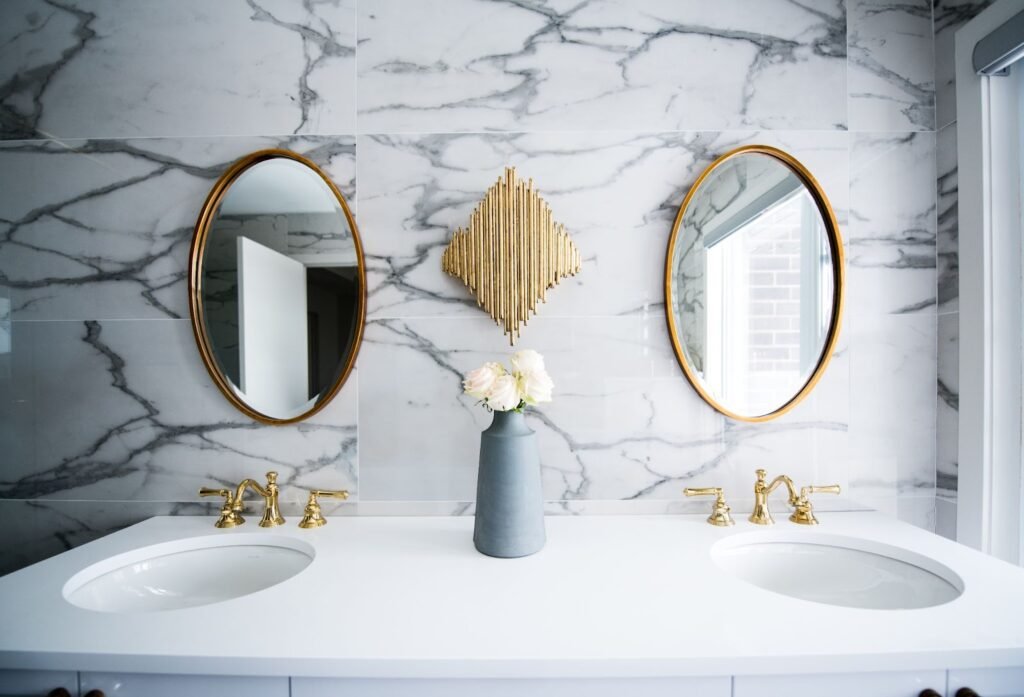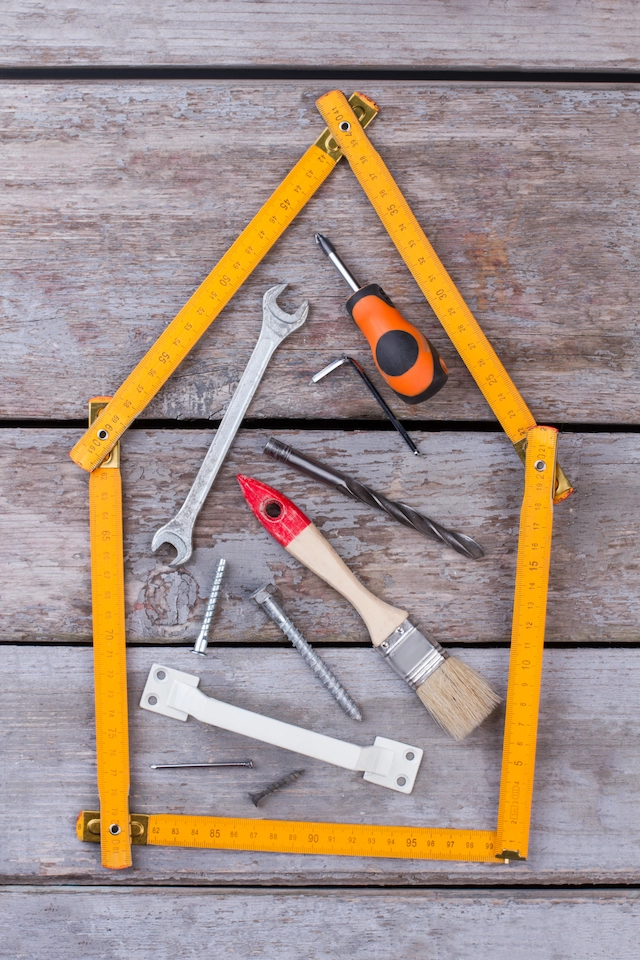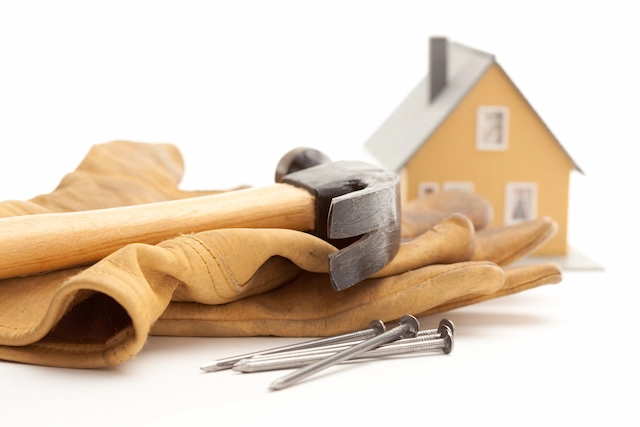If you have a vanity that’s too small, has too much storage, or needs a new look, you probably have a bathroom remodeling project in mind. A straightforward way to replace a sink is by removing it. We’ve broken down the steps in this process so that you can easily follow through with your plans.

How To Remove Your Bathroom’s Sink And Vanity
Below are some of the essential steps in updating your bathroom by removing the sink and vanity:
Prep Your Bathroom Sink Renovation
Before you start working on replacing your bathroom vanity, you must have a plan in place for debris removal. If you’re careful, most types of bathroom vanity can be donated or sold. Free-standing models don’t require much work to remove, and you can usually salvage the entire item if you have a wall-mounted model.
There are a variety of stores that can accept donations of bathroom vanity. These include Goodwill, The Salvation Army, and the National Furniture Bank.
It’s also possible to throw away your damaged bathroom vanity. However, most collection companies won’t take construction debris. You can usually rent a small dumpster if you have many bulky items from your remodeling project.
Shut Off Water Supply
Since you’re removing the cabinet, removing the hinges from the vanity doors is recommended to make accessing the bathroom’s plumbing easier. It will also make the cabinet lighter once it’s out of the bathroom.
To shut off the water to the cold and hot tap of the faucet, close the valve that connects the supply tubes to the stubs located beneath the sink. You should turn each of the valves clockwise to lock.
If the vanity faucet doesn’t have a shutoff valve, or if it’s not working correctly, you will need to find one for the main water supply of your home. Once you shut off the water, open the faucet and let the water drain out.
Disconnect Plumbing
Before removing your plumbing fixtures, ensure you have the proper steps to shut off the main water valve. You can do this in either your basement or on an outside wall.
The exact process of removing a drain stopper will depend on the type of drain cover you have. Check the description below to determine which style fits your needs.
To remove the drain cover, place a bucket underneath the sink drain and P-trap. Using a flexible tool, remove the nuts from the pipe. Then, drag the water supply line nut to the wall.
P-Trap Removal
When you’re ready to remove the P-trap assembly, put a pale under it to catch any water that might spill out after disconnecting it. The three parts of the trap assembly are a straight tailpiece section, a U-shaped trap bend, and a trap arm with an elbow.
The easiest way to remove the P-trap is by loosening its outermost slip nuts on the sink tailpiece and the trap arm’s wall end. If the pipes are plastic, you can use channel-lock pliers to loosen the nuts. Turn the nuts around and slide them away from the ends of the tubes. After carefully removing the trap assembly, dump the water into the bucket.
To keep the sewer gases from flowing into the room, fill a pipe with a thick layer of cloth and seal it off completely.
Remove Your Bathroom Mirror
Before you start razing your bathroom, ensure that the last item installed is the first one to go. It will allow you to prevent cracks. To cover the mirror, use packing tape to avoid any damage. If it’s on the wall, loosen the screws using a screwdriver.
For most mirrors, start at the top and work the bar behind the glass. To protect the wall, slide a wood shim underneath the bar. As you apply pressure, slide the wood shim into the hole.
While supporting the top of the mirror, work your way around it to prevent it from falling. Once it’s loose, carefully remove it from the bathroom.
Detach Backsplash And Wall Tiles
After removing the mirror, it’s time to clean and replace your tile and backsplash. Follow these simple steps to remove your tile safely. At the top of the corner, start by breaking up one tile at a time using a chisel.
To remove the tile, start working in a horizontal line and carefully insert the chisel under each tile. Using the hammer, remove the remaining tile.
Uninstall The Bathroom Sink
After getting the debris out of the way, it’s time to start the vanity’s work. First, you’ll need to remove the sink’s clips and any sealant. You’ll need to cut away the excess caulk and sealant using a utility knife.
Lift the sink from the counter. It can be cumbersome, so grab a helper if you’re unsure how to do it yourself.
Retract Vanity Cabinets
If the cabinet meets the walls, remove the trim located where it will be attached. Check to make sure that it’s attached to the wall. Most commonly, a cabinet will be attached to the wall using screws and mounting strips. It can also be anchored to the floor using nails or screws driven through the cabinet’s bottom. To remove all of these screws, use a drill or a screwdriver.
If the cabinet is attached to nails, remove it from the wall using a flat pry bar. Place a block between the wall and the bar and a lever against the block to prevent damage.
You should remove the cabinet from the wall. If it has holes in the back panel connected to the plumbing valves, make sure not to damage them while moving.
Prep The Walls
After you have removed your bathroom vanity, it will likely look unkempt. To keep the area looking its best, remove the old vanity and put it out of the way so you can start cleaning it. You can also remove the remaining layer of caulk on your walls using a putty knife or a scraper.
If your new vanity is the same size as your old one, you can remove the walls and floors to save time. However, if the new one is shorter or smaller, you might have to cover some of the blemishes that appeared on the old one.
Before installing the new vanity, you should first patch the old nail holes on your wall. Then, you can apply new flooring to the exposed areas of the floor. This step will ensure that the project will look its best once completed.
Conclusion
If you’re planning on remodeling your bathroom, one of the most critical steps that you can take is to replace the old vanity. A new cabinet and countertop material can give your bathroom a new look.
To install a new vanity, you’ll have to remove the old one. This step is relatively easy and doesn’t require a lot of knowledge.










